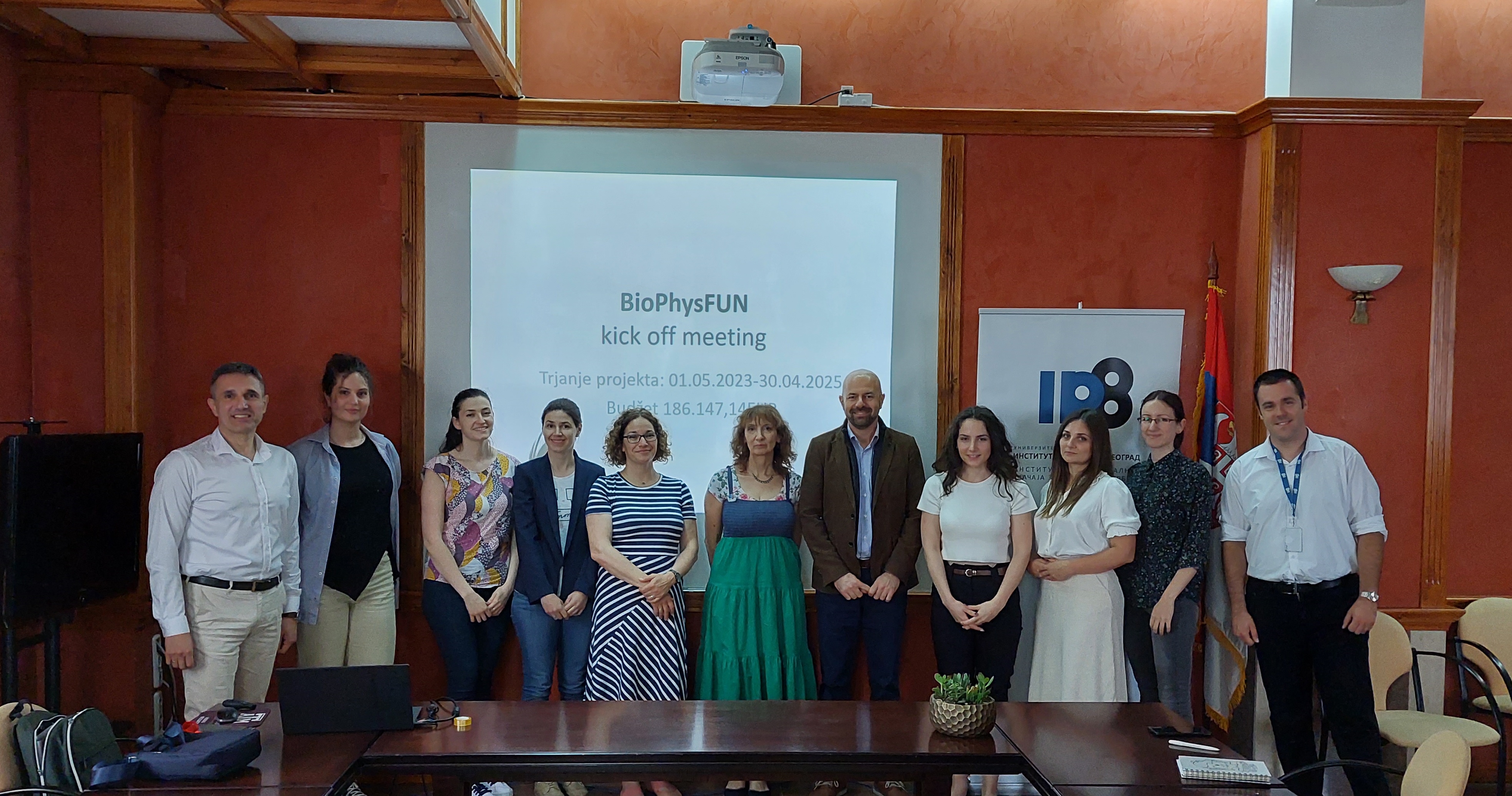





BioPhysFUN project ID
| Title: | Advanced BioPhysical Methods for Soil Targeted Fungi-Based Biocontrol agents |
| Acronym: | BioPhysFUN |
| Funding agency: | Science Fund of Republic of Serbia |
| Call (deadline): | Green Program of Cooperation between Science and Industry (11.10.2022.) |
| Start date: | 01.05.2023. |
| Duration: | 24 months (with the possibility to prolong up to 12 months) |
BioPhysFUN is one of 20 funded projects in this call.

The team

|

Institutions

Facebook page (news and gallery) - coming soon!

BioPhysFUN in brief
We are aiming to utilize the state-of-the-art nonlinear optical microscopic and electrophysiological techniques, expanding their applicability for fungi-based biocontrol agents used to protect environment by replacing common chemical pesticides. Fungal phytopathogens are the most numerous group of crop pests that contribute to the loss of up to 28 % of annual crop production worldwide. Chemical fungicides are the common solution to the problem, but they have a negative impact on the environment. More sophisticated and environmentally friendly is the use of Trichoderma-based bioagents with a range of plant-protective and fungicide actions. Our research will be based on cell nano-surgery of fungal cell wall using ultrashort laser pulses and subsequent patch clamping on the released protoplast membrane. This will enable the studies of activity and potency of specific class of antimicrobial short peptides, peptaibols, released by Trichoderma species, which act by forming ion channels in pathogen membrane as one of the main mechanisms of their fungicide action. The result of this project will be the developed instrumentation and unique method based on nano-surgery and patch clamp for studies of ionic channels in native fungal plasma membrane. The method will be further used to completely screen and characterize peptaibol activity under conditions mimicking different soil types physico-chemical properties. Testing a range of autochthonous Trichoderma spp. Isolates will enable formulation of their combinations that work best in specific soil types. This will result in controllable improvement strategy for Trichoderma-based biocontrol agents adjusted to the soil conditions in Serbia, unlike the common trial-error method in design of biocontrol agents. The results of the project will significantly increase the effectiveness of fungi-based biocontrol agents, replacing the chemical fungicides and reducing their presence in soil.
Eleven researchers from three leading national institutions and from various, complementary fields (physics, biology, biophysics, physiology, pharmacy) will carry out the activities divided into seven work packages, and deliver nineteen items, including an unique microscopic set-up for the benefit to the broad international and Serbian community.
Several national and international institutions, including Faculty of Agriculture, University of Belgrade, BioCombact d.o.o. Belgrade, Karolinska Institutet, Sweden, etc. have encouraged the realization of the project and have shown interest in potential collaboration. The project will be realized in two years and by 186,147.14 EUR, with the potential for prolonging up to twelve months.

Motivation
Through optimization and application of state-of-the-art biophysical methods already developed by our group we will record peptaibol currents on fungi membrane for the first time. We will use the set-up with femtosecond laser for precision nano-surgery and subsequently perform quality patch clamp recording from protoplasts of filamentous fungi that are representative plant pathogens. The membrane activity of peptaibols released by autochthonous Trichoderma strains will be demonstrated, measured and standardized for the first time. The protocols and procedures established can be used for determining the peptaibol contribution to overall antifungal properties of any Trichoderma strain, enabling the rational improvement of existing Trichoderma bio-control agents. The peptaibol-producing autochthonous Trichoderma strains will be ascribed appropriate soil conditions that will boost their peptaibol activity against representative plant pathogen fungi. The selected Trichoderma strains with the highest standardized peptaibol activity in specific combination of conditions, characteristic for soil types in Serbia can be used as a starting point for development of new, more potent biocontrol agents adjusted for the conditions in Serbia.
[1] Stevanović, K. et al., Laser Microsurgery of Filamentous Fungi: The Latest Protocol Enabling Patch-Clamp Amenable Protoplasts. Presentation at Photonica 2021 conference (2021).
[2] Pajić, T. et al., Label-free third harmonic generation imaging and quantification of lipid droplets in live filamentous fungi. Scientific Reports 12, 18760 (2022).

Cell nano-surgery, patch clamp and existing set-ups

Objectives (goals)

Project scheme